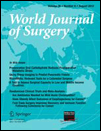Trauma Quality Improvement in Low and Middle Income Countries of the Asia–Pacific Region: A Mixed Methods Study
Abstract
Background
Quality Improvement (QI) programs have been shown to be a valuable tool to strengthen care of severely injured patients, but little is known about them in low and middle income countries (LMIC). We sought to explore opportunities to improve trauma QI activities in LMIC, focusing on the Asia–Pacific region.
Methods
We performed a mixed methods research study using both inductive thematic analysis of a meeting convened at the Royal Australasian College of Surgeons, Melbourne, Australia, November 21–22, 2010 and a pre-meeting survey to explore experiences with trauma QI activities in LMIC. Purposive sampling was employed to invite participants with demonstrated leadership in trauma care to provide diverse representation of organizations and countries within Asia–Pacific.
Results
A total of 22 experts participated in the meeting and reported that trauma QI activities varied between countries and organizations: morbidity and mortality conferences (56 %), monitoring complications (31 %), preventable death studies (25 %), audit filters (19 %), and statistical methods for analyzing morbidity and mortality (6 %). Participants identified QI gaps to include paucity of reliable/valid injury data, lack of integrated trauma QI activities, absence of standards of care, lack of training in QI methods, and varying cultures of quality and safety. The group highlighted barriers to QI: limited engagement of leaders, organizational diversity, limited resources, heavy clinical workload, and medico-legal concerns. Participants proposed establishing the Asia–Pacific Trauma Quality Improvement Network (APTQIN) as a tool to facilitate training and dissemination of QI methods, injury data management, development of pilot QI projects, and advocacy for quality trauma care.
Conclusions
Our study provides the first description of trauma QI practices, gaps in existing practices, and barriers to QI in LMIC of the Asia–Pacific region. In this study we identified opportunities for addressing these challenges, and that work will be supported by APTQIN.




